When eight innocent people lost their lives in a single night, the usually-quiet, uneventful town of Villisca, Iowa, changed forever in June 1912. The perpetrator viciously murdered the Moore family and their two house guests with an axe. Suspects and confessions have come forward, and even trials were held, but, ultimately, the person responsible for the barbaric crimes remains unknown. Now more than a hundred years later, the Villisca axe murders remain one of the most mysterious cases in history.
Located in Montgomery County, Iowa, Villisca boasts a population of around 1,100 residents as of 2019. Back in the late 1890s and early 1900s, Villisca was a thriving town with a close-knit community. Although there were only 2,500 residents in Villisca, it was a hub for developing businesses and a magnet for local tycoons who were eager to capitalize on the area’s growth.
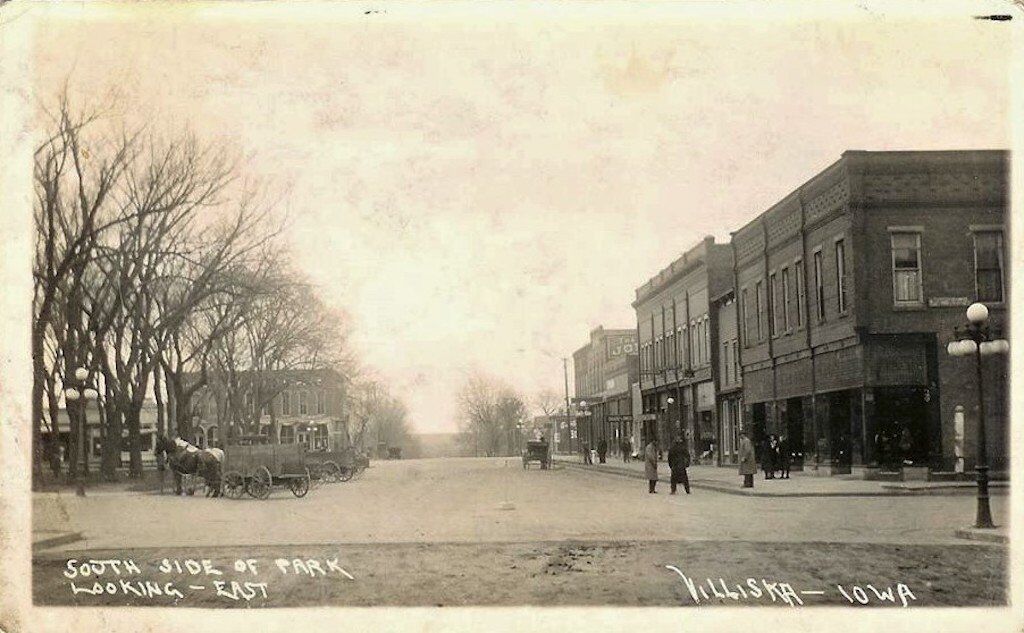
It was a quiet town, interrupted only by the regular trains which passed through. In addition to the many businesses, Villisca also featured a National Guard Armory, funded entirely by the local residents – the first of its kind on U.S. soil.
While Villisca still possesses the same small-town charm and appeal it did over a hundred years ago, its legacy is forever tainted by the events of June 1912. To this day, the Villisca Axe Murders continue to haunt the small town. Its effects are sewn into the fabric of its history and never seem to fade even with the passage of time.
The eight victims — the entirety of the Moore family and two friends of the Moore children — were as follows:
- Josiah B. Moore, 43
- Sarah Moore, 39
- Herman Montgomery Moore, 11
- Mary Katherine Moore, 10
- Arthur Boyd Moore, 7
- Paul Vernon Moore, 5
- Ina Mae Stillinger, 8
- Lena Gertrude Stillinger, 12
The Moore Family
The head of the household was Josiah B. Moore. He was a successful businessman in Villisca, excelling at everything he lent his hand to. After he amassed reasonable wealth during his thirties, he later went on to marry and have four children with his wife, Sarah.
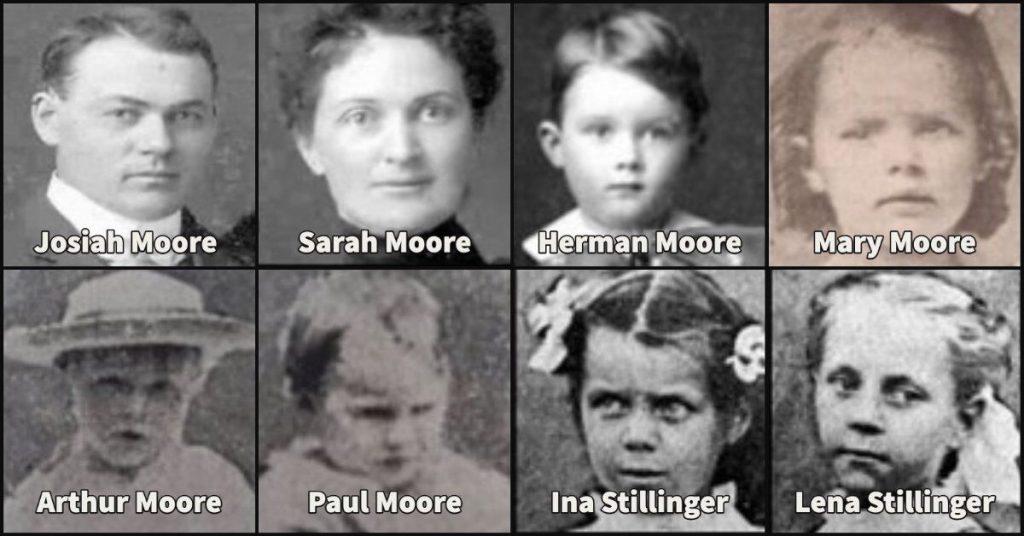
The Moore family was well-liked throughout Villisca and gained a reputation for being generous and kind. They were a church-going family who maintained strong contacts and good relationships with many in the community. However, Josiah had a number of enemies in both his personal and professional life.
June 10th, 1912
On the morning of June 9th, Josiah and Sarah prepared their children for the busy day they had planned. Their local Presbyterian church was hosting Children’s Day. Sarah Moore had worked as one of the co-facilitators of the event, and the entire Moore family would be attending. The activities lasted them through the afternoon and into the early evening, finally ending around 9:30 pm after all of the children had finished their performances.
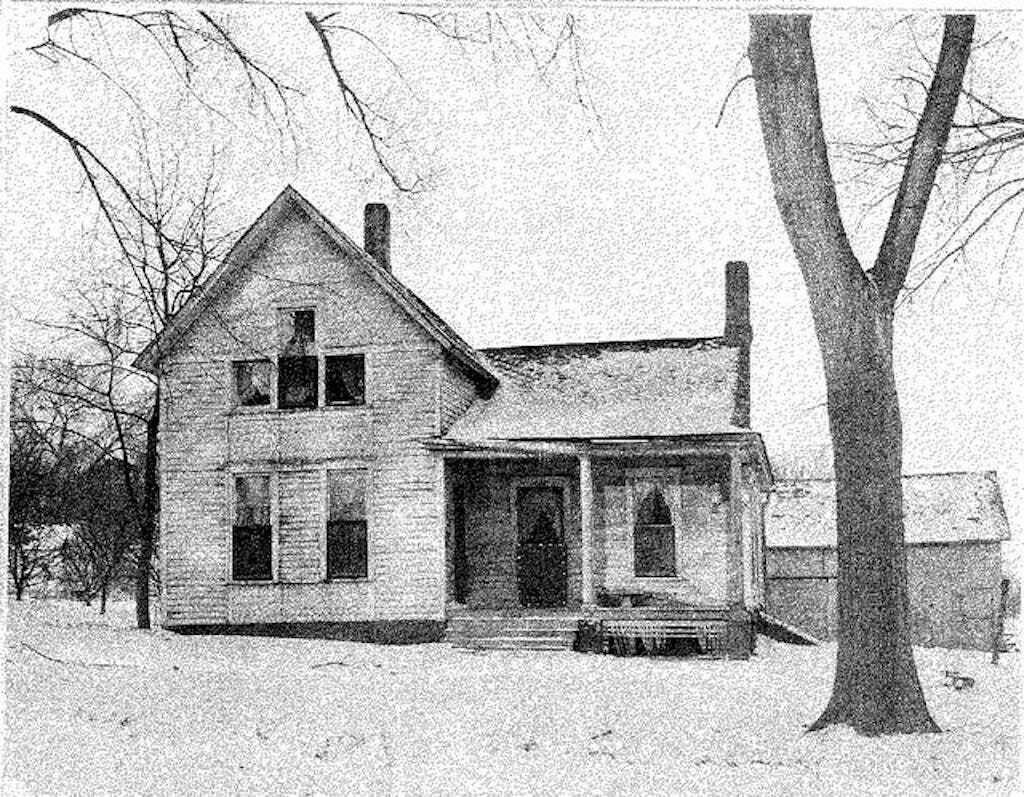
Two neighborhood children, Lena and Ina Stillinger, asked their parents if they could stay over at the Moore’s house that night, and their parents agreed.
You May Also Like: Lizzie Border Took an Axe…or Did She?
The Moore family, along with the two Stillinger girls, left the church and made their way back to the Moore’s home as the evening set in. It was a late night for the youngsters, and after milk and cookies for supper, everyone present in the Moore home retired to bed.
None of them would be seen alive again.
June 11th, 1912
Come morning around 7:30, the usually-vibrant Moore household was strangely devoid of activity, and the local neighbor, Mary Peckham, took notice. The curtains were still shut and none of the eight occupants had come or gone on their morning routes. Mary called Josiah’s brother, Ross, who came to check on the household.
He arrived around 8 am and let himself in through the front door. He first inspected the downstairs bedroom, and to his horror, he found two bloodsoaked sheets covering two corpses. They were the bodies of Josiah and Sarah Moore.
Ross called the local marshall and told him that something terrible had happened.
Marshall Henry Horton arrived on the scene thirty minutes later and thoroughly searched the Moore house. He found a dead body in every bed, along with a blood-covered axe still lying in the room where the Stillinger girls lay dead. The entire Moore family and their two friends were brutally slain.
Murder Scene
Word quickly traveled around Villisca. Police officers and a local doctor scrutinized the crime scene and examined the bodies. Doctor F.S. Williams, the first medical officer on the scene, determined that the attacks took place sometime between midnight and 5 am.
An axe struck each of the victims between 20-30 times. This left them mangled and bloody. The blade of the weapon struck Josiah, while the blunt end crushed the rest of the victims. This distinction possibly indicates that Josiah had been the killer’s real target.
Seven of the eight victims died while they slept. However, 12-year-old Lena Stillinger may have still been awake when the killer struck. Her body displayed a defensive wound on her arm, and she was lying lengthwise across her bed.
You May Also Like: Servant Girl Annihilator Murders of Austin, Texas
There was no decapitation, dismemberment, or sexual assault. The cause of death was brute force trauma to each of the victims’ skulls. In Josiah and Sarah’s bedroom, the ceiling showed gashes from the axe’s upswing.
Evidence
In addition to the sheer brutality on display, there were bizarre discoveries at the crime scene. Two cigarette butts were discovered in the attic, suggesting that the perpetrator had waited there while everyone in the house went to sleep. He then made his way through the home using an oil lamp, first targeting Josiah and Sarah and then moving on to the children.
Police discovered a plate of food and a bowl of bloody water on the kitchen table, which the killer might have used to wash his hands. He also searched through the drawers and found garments to cover various surfaces in the house, including mirrors and glass panels in the doors. However, most strangely of all was that the killer left a four-pound slab of bacon in the Stillinger girls’ room. The killer took the house keys as he left, locking the doors behind him.
By the afternoon of June 11th, a crowd had amassed outside the Moore residence. Doctor F.S. Williams told the audience:
Don’t go in there. You’ll regret it until the last day of your life.
Doctor F.S. Williams
Villisca Axe Murders Aftermath
Despite the doctor’s warning, the curious residents of Villisca descended upon the Moore house and ventured inside. The crime scene became instantly contaminated, and given the lack of forensic advancements at the time, finding any concrete DNA evidence left by the perpetrator was an almost-impossible task.
The local police had very few leads. They searched Villisca and the surrounding areas and interviewed some townsfolk. But the killer had at least a three-hour headstart on them, and police believed that he would have already fled the town.
Numerous suspects cropped up over the years, some of whom even confessed to the Villisca murders.
Lyn George Jacklin Kelly
A traveling minister named Reverend George Kelly arrived in Villisca for the first time on the morning of June 10th to attend the Sunday school directed by Sarah Moore. He then left Villisca at 5 am the next morning on the train heading westbound out of the town.
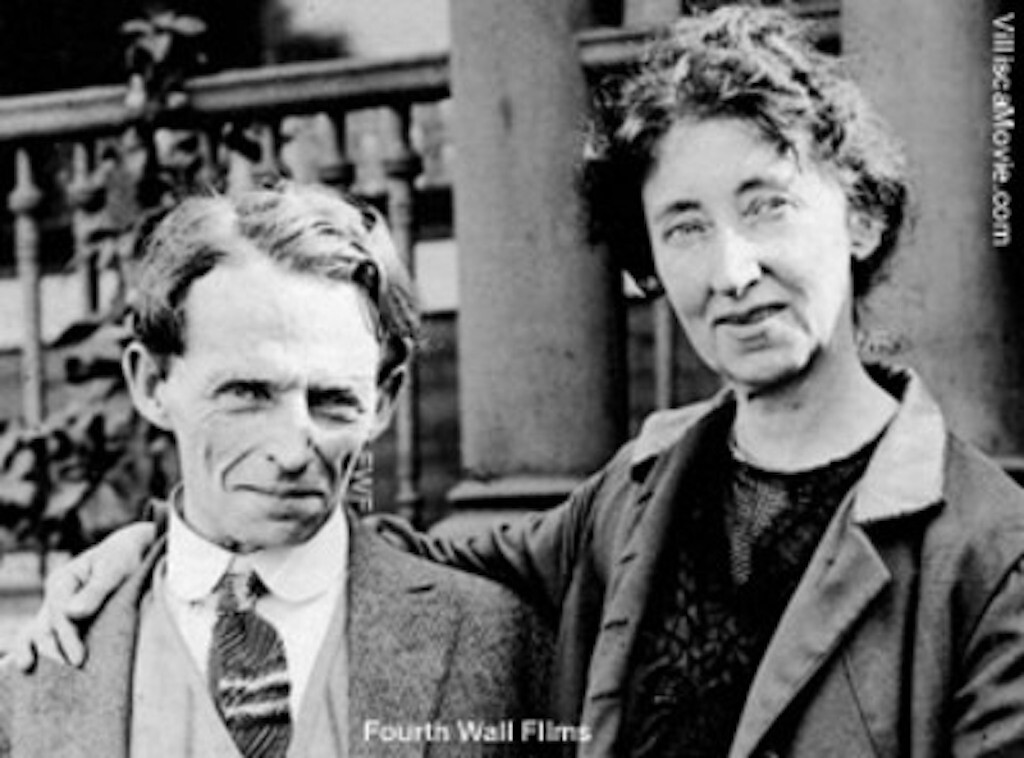
Reportedly, he told some of the passengers that eight dead bodies were lying back in Villisca – several hours before the news had spread. He even mentioned that they had been killed while they slept.
Reverend Kelly returned to Villisca two weeks later, and after fooling officers into thinking he was a detective from out of town, he was able to latch on to a tour of the Moore house with a group of legitimate investigators.
It wasn’t until police became aware of Kelly’s past that he became a suspect in the Villisca killings. In his teenage years, Kelly had struggled with severe mental illness and also had a history of sexual deviance. Regularly visiting churches throughout Iowa and neighboring states, Kelly had developed a reputation as something of an eccentric.
It wasn’t until 1917 that a Grand Jury indicted Kelly for the murder of Lena Stillinger. In August of that year, Kelly confessed to the murder, saying that God had whispered “suffer the children to come unto me” in his ear.
Given Kelly’s history of mental illness, his confession was dismissed. The court later acquitted him and set him free.
Henry Lee Moore
There was another man by the name of Henry Lee Moore. Though he had no relation to the Moore family, Henry was an alleged serial killer who, only months after the Villisca killings, murdered his mother and grandmother with an axe in a crime that bore striking similarities to the Moore slayings. His motive, he said, was to obtain the deed to their Missouri family home.
Around the time Henry became a suspect, other similar axe murders were popping up around the country. An officer assigned to the Villisca case became convinced that Henry Moore was responsible for the Villisca killings and a string of similar attacks in Colorado, Kansas, and Illinois. But little evidence tied Henry to the Villisca killings, so it was dismissed.
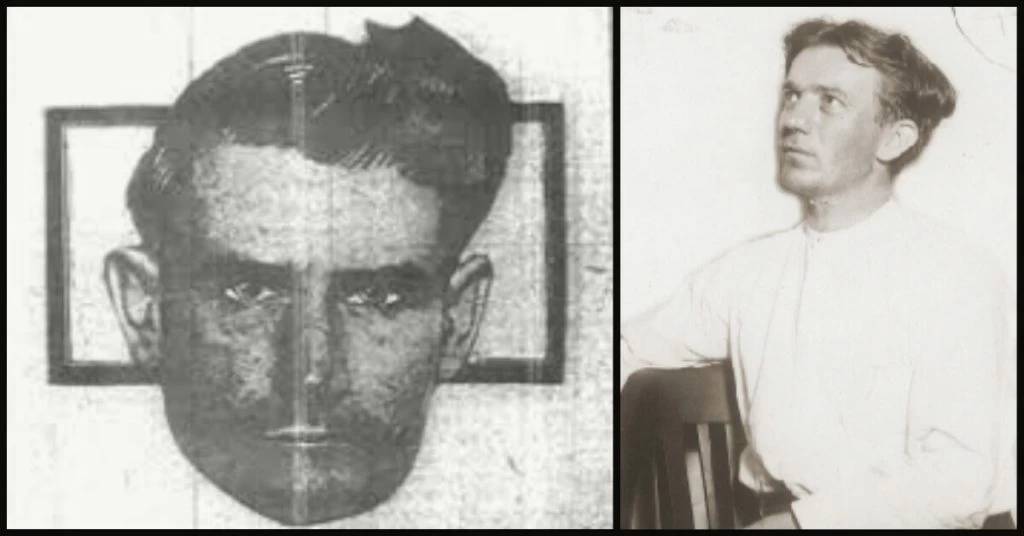
William Mansfield
Two years after the Villisca killings, police turned their attention to an Illinois resident and serial killer. William Mansfield murdered his wife, daughter, and parents-in-law in a way that was eerily similar to the Moore family murders. Later, investigators linked him to other axe murders that happened in Kansas and Colorado, and he was even a suspect in the notorious Axeman of New Orleans case.
You May Also Like: Cleveland Torso Murderer: The Mad Butcher
While the Villisca perpetrator had draped cloth over the mirrors and reflective door panels, the murderer in the Illinois case used sheets to conceal the windows so no one could see in. It later came to light that Mansfield had been in Illinois around the time of the Villisca killings. Indeed, an eyewitness later claimed that he saw Mansfield boarding a train in Clarinda, Iowa, only twenty minutes outside of Villisca.
Frank F. Jones
Frank Jones, a Villisca businessman with political sway throughout the town, was another suspect. Several years before the murders, Josiah Moore had been an employee of Jones, but Moore left to start up his own business. In doing so, Moore took a big chunk of Jones’s business with him.

Moore and Jones despised each other, according to Villisca residents. However, it was considered a stretch that Jones could progress to murdering his business rival. There were also rumors around Villisca that Moore had engaged in extramarital activities with Jones’s daughter-in-law.
The Villisca House Today
Over a hundred years later, the Moore family household still sits on the quiet residential street in Villisca, Iowa. While every other house nearby boasts renovations and refurbishments, the Villisca house remains frozen in time. There’s no electricity, the curtains are permanently drawn, and the doors and windows are boarded up. Outside, there’s a sign marking ‘The Villisca Ax Murder House.’
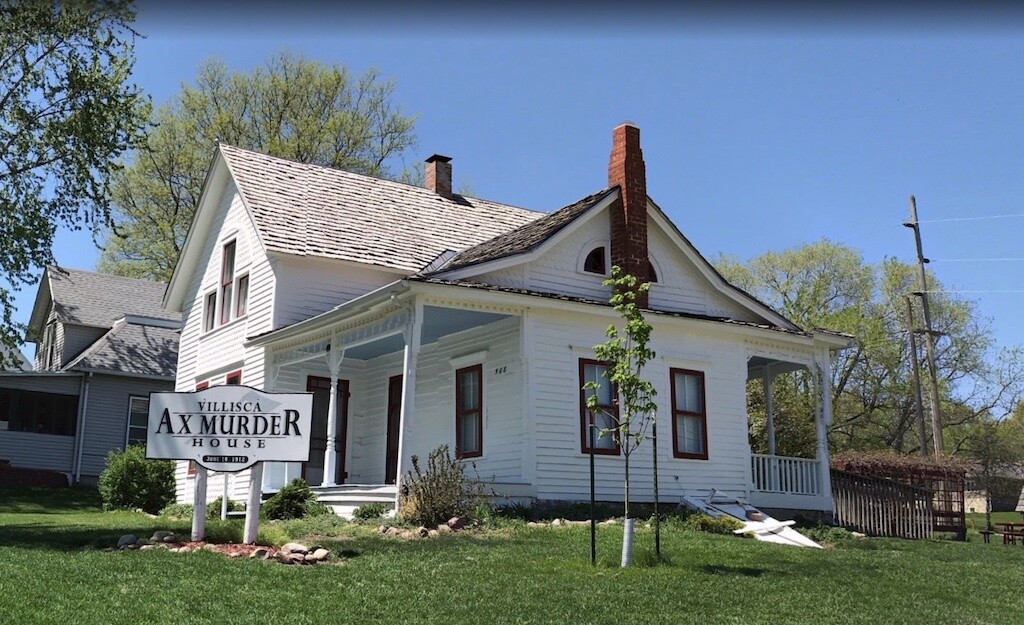
The Villisca house is now an attraction, a spectacle for the morbidly curious tourists. Slightly touched up to maintain its stability, it now exists as a museum. Its interior still boasts the same furniture and beds in which the Moore family and Stillinger girls were cruelly slain.
While many have tried to solve the case, the Villisca murders remains a mystery and most likely will forever.